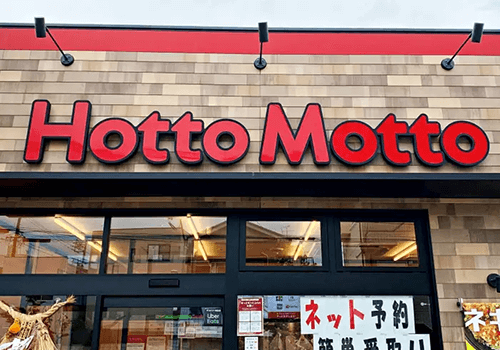-
[From March Issue 2015]
“Chinese Restaurant Bamiyan” is a chain of 342 restaurants. They offer not only standard dishes like gyoza (dumplings with minced pork and vegetable stuffing) and ramen (Chinese noodles in soup), but also authentic Chinese food like Peking duck. Seasonal fare dishes are made with high quality ingredients and are available for a limited period only. With set menus you can eat for a reasonable price. English menu available.
[No. 1] Authentic Grilled Gyoza 239 yen
Made in house, these dumplings are fried to a crispy finish on one side. Wrapped in a springy case, the filling is as juicy as xiaolongbao soup dumplings. Delicious even without any dipping sauce.

[No. 2] Bamiyan Ramen 449 yen
Traditional ramen in soy sauce, chicken bone and dried bonito broth. Pork fat and garlic create a subtle flavor.

[No. 3] Fried Rice 499 yen
Frying the rice almost to the point of burning it brings out its delicious taste, pleasant aroma and fine texture. Unlimited soup refills come with this dish.

Chinese Restaurant Bamiyan[2015年3月号掲載記事]「中華レストラン バーミヤン」は342店舗を展開する中華料理のチェーン店。ぎょうざやラーメンなど手軽なものから北京ダックなど本格的な料理まで取りそろえている。高級食材を使った期間限定フェアも開催しており、その時期だけのメニューも楽しめる。コース料理を含め、どれも手頃な価格で食べられる。メニューには英語も掲載。
【No.1】本格焼餃子 239円
自家製。焼面はパリッと皮はもちっと、中は小龍包のようにジューシー。何もつけずに食べてもおいしい。
【No.2】バーミヤンラーメン 449円
醤油と鶏ガラとかつお節を使った昔ながらの定番ラーメン。豚の脂やニンニクを隠し味に使っている。
【No.3】チャーハン 499円
鍋肌で焦げる寸前まで炒めることで、ご飯のおいしさと香ばしさ、そしてパラパラの食感を出している。スープバー付き。
-
[2015年3月号掲載記事]
指揮者 加藤洋朗さん
Choral conductor KATO Hiroaki works with a faith in the “power of song to bring peace to the world.” The NHK Tokyo Children Chorus was founded in 1952 and between 2003 and 2012 Kato was active as its principal conductor. In 2009, they were given the opportunity to perform for the pope (Benedict XVI). Today, Kato coaches youth choirs all over Japan while lecturing at the music department of Toho Gakuen College.
As a choral coach, he wanted the children to mainly focus their best efforts on trying to create good music. “If you’re seriously engaged in music, there are times when you express yourself in a way you could never do with words, and that gives you a strong sense of achievement. In those moments, you’re happy to be alive. Once you discover this joy, the idea of starting a fight to kill people becomes unthinkable,” says Kato.
Kato himself had in intense experience of surpassing his own abilities as a junior high school student. Because of this experience, he set out to become a conductor and then a singer. However, as he began his advanced studies, he sensed the students around him were far more talented. He also had doubts about his ability to express himself as a male singer the way he wanted. “In my 20s, I lost all hope for a future in music,” he recalls.
During the time he was worried about his future career, he met TANAKA Nobuaki, one of Japan’s trailblazing choral conductors. While singing for three years in a choir conducted by Tanaka, he observed Tanaka’s conducting technique as much as possible. “From him I learned what music and even life itself is. My choral conducting today is based on what I learned from him.”
Since last October, Kato has been coaching a choir of ambassadors’ wives who “want to make an appeal for peace through song.” Having only practiced for one month and a half, they gave their first concert for an audience of some 60 people from 30 embassies. They sang Christmas songs and “Hana wa Saku (The Flower Will Bloom),” a charity song for the victims of the Great East Japan Earthquake. “They sang ‘Hana wa Saku’ in Japanese because they all wanted to, but it was a struggle for them.”
The concert was a great success. After the performance, Kato discovered that the wives had been very nervous. When he shook hands with them their hands were very cold. The wife of the Finnish ambassador, who made the final speech, rounded up proceedings with tears in her eyes, saying, “I never thought I, of all people, would be able to make an appeal for peace through music.”
“Regardless of your technical skill, if you have a strong desire to express yourself, your message will reach your listeners,” says Kato who’s rediscovering the power of music. In the future, with the goal of world peace and integration in mind he wants to create good quality music with more young people.
Photos by WATANABE Tsutomu
Text: ICHIMURA Masayo[2015年3月号掲載記事]指揮者 加藤洋朗さん
「歌には世界を平和にする力がある」と信じ活動をしているのは、合唱指揮者の加藤洋朗さんです。1952年創立のNHK東京児童合唱団の常任指揮者として2003~2012年まで活躍。2009年には、ローマ法王(ベネディクト16世)に献歌をするという機会にも恵まれました。現在は桐朋学園大学音楽学部の講師を務めるかたわら、各地で青少年の合唱指導に取り組んでいます。
合唱団を指導するにあたり子どもたちに最も大事にしてほしかったのは、いい音楽をつくるためにいつも精一杯の努力を惜しまないということでした。「音楽に一生懸命に取り組むと、言葉では表せない自分を音楽で表現できたという強い達成感を得られるときがあるんです。生きていてよかったと思える瞬間です。そうした喜びを知れば、人を殺すほどの争いをしようなんて思わないはずなんです」と加藤さんは話します。
加藤さん自身、中学生のときに合唱する中で自分を出し切った!と感じる強烈な体験をしました。その経験から最初は指揮者を、次いで歌手を目指します。しかし専門的な勉強を始めてみると周囲とは大きな実力の差を感じました。また、自分の表現したい音楽を男声歌手として表現しきれるのかという疑問も抱いていました。「20代の頃は音楽家としての自分の将来に全く希望を見出せませんでした」と振り返ります。
進路に悩む中で出会ったのは日本の合唱指揮者の草分け的な存在の田中信昭さんです。約3年間、田中さんが指揮する合唱団で歌いながら、可能な限り指揮を学びました。「音楽、そして生きることそのものについて学びました。教えていただいたことが現在の私の指導の基盤になっています」。
昨年10月からは「歌で平和をアピールしたい」という大使夫人たちの合唱団の指揮をしています。わずか1ヵ月半の練習期間で、30ヵ国の大使館関係者約60人を前にコンサートを行いました。披露したのは、クリスマスソングと東日本大震災被災者のためのチャリティーソング「花は咲く」です。「『花は咲く』はみなさんの希望で日本語で合唱したんです。でも、とても苦労されていました」。
コンサートはとても盛り上がりました。加藤さんは演奏終了後に夫人たちがとても緊張していたことを知ります。握手をした手がとても冷たかったのです。最後に挨拶をしたフィンランド大使夫人は「自分が音楽を通して平和を訴えられるなんて思いませんでした」と涙ぐみながら会を締めくくりました。
「なんとかして自分の思いを表現したいと願うと、歌唱の技術を超えて聴き手にメッセージが届くことがあるのです」と加藤さんは音楽の持つ力を改めて感じています。今後は、世界の平和と融合のために、多くの若い人と良質な音楽をつくりたいと考えています。
写真:渡辺 力
文:市村雅代 -
[From March Issue 2015]
Nikon
Founded in 1917, Nikon Corporation (Minato City, Tokyo Prefecture) is a world-class manufacturer of optical devices. It was founded to manufacture optical products which could not be imported due to the ramifications of World War I and an investment by IWASAKI Koyata, President of Mitsubishi Limited Partnership made it possible to merge three companies that respectively made gauges, glass, and lenses. When it was established, the company name was Nippon Kogaku K.K.
Nikon was originally the name of a small camera Nippon Kogaku K.K. launched in 1948. In the planning stages the camera had initially been called the Nikolette, a name derived from Nikko, an abbreviation of Nippon Kogaku. The idea was revisited, however, because many in the company felt that “Nikolette would be too weak a name for a future core product.” Then, to make the name sound stronger, ‘n’ was attached to the end of Nikko and thus Nikon was used.
There is an anecdote concerning the company name. At a ceremony to mark the twinning of Tokyo and Paris, then president FUKUOKA Shigetada introduced himself to the mayor of Paris as “Fukuoka from Nippon Kogaku K.K.,” but the mayor looked baffled. When his secretary informed him that the company made Nikon cameras the mayor answered in a friendly tone, “I know Nikon very well.”
The product name had become more famous than the company name. The company name was changed to Nikon in 1988 at the suggestion of insiders who believed Nikon was already an internationally well-known brand with a reputation for reliability.
Nikon cameras and “NIKKOR” interchangeable lenses are so reliable that they are used by the majority of media companies in and outside Japan. When the Korean War broke out in 1950, photojournalist David Douglas DUNCAN took pictures with NIKKOR lenses. Those pictures were featured in the American photo magazine “Life.” The sharpness of these pictures created quite a stir in the magazine’s editorial department in New York. At the same time the New York Times wrote about Nikon’s high quality.
Nikon products are also used in space. Designed to NASA specifications, in 1971, the “Nikon Photomic FTN” was used on the Apollo 15 mission. Since then, Nikon has long been supplying cameras and interchangeable lenses to NASA. WAKATA Koichi, the first Japanese commander of the International Space Station (ISS) who returned to Earth in May 2014, used a “D4” to take pictures of space and the Earth.
Today, with an emphasis on precision equipment, imaging and instruments, the company has diversified. Its focus is not only on cameras, but also on the development of industrial products such as semiconductor/FPD (flat panel display) lithography systems, microscopes, and measuring instruments. Considered the most precise machines in history, semiconductor lithography systems make IC (integrated circuits) which are an integral part in all electronic devices. Nikon is beginning to apply its core technologies – namely optics and precision engineering – in the fields of health and medicine.
Nikon Corporation
Text: ITO Koichi[2015年3月号掲載記事]ニコン
株式会社ニコン(東京都港区)は1917年に設立された、世界を代表する光学機器メーカーです。第一次世界大戦の影響で輸入できなくなった光学製品を作るため、三菱合資会社社長、岩崎小彌太さんの出資で、計器、ガラス、レンズ関係の3社が統合して生まれました。設立時の社名は日本光学工業株式会社です。
ニコンという名前はもともと、日本光学工業が1948年に発売した小型カメラのブランド名でした。当初は日本光学の略称である日光(ニッコー)にちなんだニコレットという名前を付ける準備をしていました。しかし「将来の主力製品となるべき商品の名前としては弱い」という意見が社内でたくさん出たため、考え直すことになりました。そして、ニッコーの後にnを付けて言葉の響きを強くしたニコンが採用されることになりました。
会社名についてのエピソードがあります。東京とパリが姉妹都市になったときの式典で、当時の社長だった福岡成忠さんが「日本光学工業の福岡です」とパリ市長に挨拶したとき、市長は首をかしげました。市長の秘書がニコンを作っている会社であることを教えると、「ニコンならよく知っている」と親しげに話しかけてきたといいます。
社名よりも製品名のほうが有名になっていたのです。すでに国際的に通用し、信頼度も高いニコンの方が良いとの社内の意見により、1988年に社名をニコンに変更しました。
ニコンのカメラと交換レンズ「ニッコール」は信頼性が高く、国内外の報道機関のほとんどが採用しています。1950年に始まった朝鮮戦争のとき、写真家のデビッド・ダグラス・ダンカンがニッコールで撮影。その写真がアメリカの写真誌「ライフ」に掲載されました。ニューヨークの編集部では、どうしたらこんなにシャープな写真が取れるのだろうと大騒ぎになりました。性能の高さは、当時のニューヨーク・タイムズで報じられました。
ニコン製品は宇宙でも活躍しています。1971年にはアポロ15号でNASA仕様の「Nikon Photomic FTN」が使われました。これを皮切りに、ニコンは長年にわたってNASAにカメラと交換レンズを納入しています。日本人初の宇宙ステーション(ISS)船長を務め、2014年5月に地球に帰還した若田光一さんが、「D4」を使って宇宙空間や地球を撮影しました。
現在は精機事業と映像事業、インストルメンツ事業を中心として事業領域を広げています。カメラばかりでなく、半導体・FPD(フラットパネルディスプレイ)露光装置や顕微鏡、測定機など、産業分野の製品開発も重視しています。半導体露光装置は史上最も精密な機械と呼ばれ、身の回りにある電子機器に欠かせないIC(集積回路)を製造します。また、ニコンの核である光利用技術や精密技術を健康・医療分野に生かし始めています。
株式会社ニコン
文:伊藤公一 -
[From March Issue 2015]
HU Shuhao
YU Zhihang
“We like Japanese comics and anime. We particularly like ‘One Piece.’ The passionate friendships between characters made a big impression on us,” say HU Shuhao and YU Zhihang from China. The two are currently studying at JCLI Language School in Shinjuku City, Tokyo Prefecture. “One of the good things about this school is that you can make friends with people from a variety of different countries. I became especially close friends with Yu-san because we have a similar liking for comics and anime,” says Hu. “Hu-san is like an older brother to me,” smiles Yu.
Hu began studying Japanese during his third year of university in China. “It was because I was interested in Japanese society and culture. However, since my studies in China put an emphasis on grammar, I came to Japan because I wanted to study speaking,” says Hu. Yu says, “After graduating high school in China, I came to Japan because I wanted to go to a Japanese university. Since I had hardly studied any Japanese before coming here, it was very difficult in the beginning,” he says with a smile.
There are approximately 700 students at JCLI Language School, and there are four semesters each year. “I entered the Beginner II class in April, 2014, and am now in the advanced class. I sometimes teach classmates struggling with kanji how to write the characters and the difference between “網” (ami: net) and “綱” (tsuna: rope),” says Hu. Yu says, “I entered the Beginner I class in April, 2014, and am now in the Intermediate class. I enjoy the lessons in which each student introduces their own country’s customs and culture.”
The downside of living in Japan is that it costs a lot of money. About six months into his stay in Japan, Hu started looking for a part-time job. “I handed in my resume after seeing a poster in Uniqlo advertising for staff. I was overjoyed when I got the call telling me I was hired,” says Hu. Yu reflects, “About three months after arriving in Japan, I began searching for part-time work. I visited several convenience stores and left resumes. It took about one week to land a job.”
They struggled numerous times during work hours because they didn’t understand the Japanese spoken by the customers. Hu says, “I did not understand the meaning of zaiko (stock), nor could I pronounce the name of our recommended product. It is challenging because particular terms are used for serving customers, and the products often have long katakana names.” Yu says with a smile, “I still wind up calling the manager when I cannot catch what the customer is saying.”
They have recently become more comfortable with speaking Japanese. “Transactions that were once difficult at the bank and at government offices are now easier because I can understand Japanese. My part-time job is fulfilling not only because my Japanese has improved, but also because my knowledge of the products has deepened; I can now recommend products to customers and show workers with less experience than me where a certain product is located,” says Hu. Yu laughs, “When I understand the dialogue in anime, I am happy that my Japanese has improved.”
Hu wants to “study sociology in a Japanese graduate school.” Yu says, “All I can think about at this point is trying my best to improve my Japanese.” They both enjoy spending their spare time with classmates. “We go out to drink or play games together. But we’re a little lonely as there aren’t any goukon (mixed-sex dating parties),” jokes Hu. Yu says, “I go sightseeing around Tokyo with my buddies. I adore Akihabara. Tokyo Tower and Rainbow Bridge are great, too.”
JCLI Language School
Text: SAZAKI Ryo[2015年3月号掲載記事]胡 書豪さん
于 志航さん
「日本のまんがやアニメが好きです。特に『ワンピース』。登場人物たちの熱い友情に感動します」と口をそろえるのは、中国出身の胡書豪さんと于志航さんです。二人は現在、東京都新宿区にあるJCLI日本語学校で学んでいます。「この学校はいろいろな国から来た人と友達になれるところがいいですね。于さんとはまんがやアニメの好みが似ていたので特に仲よくなりました」と胡さん。「胡さんはお兄さんみたいです」と于さんもほほえみます。
胡さんは中国の大学3年生のときに日本語を勉強し始めました。「日本の社会や文化に興味を持ったからです。でも中国での勉強は文法が中心になってしまうので、話し方を学びたいと思って日本へ来ました」と胡さん。于さんは「中国で高校を卒業した後、日本の大学への進学を志して来日しました。来る前は日本語をほとんど勉強していなかったので、最初はとても大変でした」と苦笑します。
JCLI日本語学校には約700人の生徒がいて、1年に4学期があります。「僕は2014年4月に初級IIに入り、今は上級です。漢字に苦労しているクラスメートに書き順や網と綱の違いを教えてあげたりしています」と胡さん。于さんは「2014年4月に初級Ⅰに入り、今は中級にいます。生徒がそれぞれ、自国の習慣や文化を発表する授業がおもしろいですね」と話します。
日本の暮らしで大変なのは、お金がかかることです。胡さんは来日後半年ほど経った頃からアルバイトを探し始めました。「ユニクロのお店に求人のポスターがはってあるのを見て、履歴書を持っていきました。採用の電話がかかってきたときはとても嬉しかったです」と言います。于さんは「来日後3ヵ月ほど経ってからバイト探しを始めました。コンビニを何軒も訪ねて履歴書を置いてきました。採用までは1週間くらいかかりました」と振り返ります。
アルバイト中、お客の話す日本語がわからなくて苦労したことは何回もあります。胡さんは「在庫の意味がわからなかったり、お勧めの商品が言えなかったり。接客用語は特殊だし、商品名は長いカタカナのものが多くて大変です」と言います。于さんは「今でも、お客様の言うことが聞き取れないと店長を呼んでしまいますね」と苦笑いします。
最近は日本語に随分慣れました。「以前はとても大変だった銀行や役所での手続きが、今は日本語がわかるので簡単になりました。バイトでも、日本語だけでなく商品の知識も増えたので、お客様に商品をお勧めしたり後輩に商品の場所を教えたりできるようになって充実しています」と胡さん。于さんは「アニメを見ていてセリフが理解できたとき、日本語が上達してよかったと思います」と笑います。
胡さんは「日本の大学院で社会学をやりたいです」と意気込みます。于さんは「今はまだ、日本語をがんばることしか考えられません」と言います。二人とも余暇はクラスメートと楽しんでいます。「みんなで飲み会やゲームをやります。でも合コンをやらないので寂しいなぁ」と冗談を言う胡さん。于さんは「僕は仲間と東京観光をしています。秋葉原が大好き。東京タワーやレインボーブリッジもいいですね」と話します。
JCLI日本語学校
文:砂崎良 -
[From March Issue 2015]
Gokusen
In this comedy YAMAGUCHI Kumiko is an unconventional teacher working at Shirokin Gakuin boy’s high school. The title “Gokusen” signifies that Kumiko is both the female heir to a crime syndicate and a school teacher. It was serialized from 2000 through to 2007 in the comic magazine “YOU.” It was adapted into a TV drama and movie, and through these works many actors became well-known.
A teacher at Shirokin Gakuin – a school with many problem children – Kumiko is put in charge of class four of the second year (junior year). The students proceed to make fun of seemingly mild-mannered Kumiko. One day when student KUMAI Teruo is attacked by senior year students, Kumiko comes to his rescue. Soon everybody comes to adore the hot-headed Kumiko. While helping out Kumiko, student leader SAWADA Shin finds out about Kumiko’s shady background.
Since her parents died in a traffic accident, Kumiko was left in the care of her grandfather KURODA Ryuichiro from a young age. The Kuroda clan, which her grandfather leads, has an excellent legal adviser called SHINOHARA Tomoya. Owing a debt of gratitude to Kumiko’s grandfather, Shinohara has remained in the underworld and during this time Kumiko has continued to hold a torch for him. Though she has the support of the clan’s henchmen, this romance does not develop.
As class four year two begins to come together as a group, Shirokin Gakuin’s future becomes uncertain. The school board chairman stops recruiting students for the next fiscal year and it’s rumored that the school is due to close. Angered by the news, Kumiko makes the board chairman write out a contract stating that if the school becomes number one in a sport or in a humanities subject within two months, the closure will be cancelled.
Though still having difficulty dealing with her students, with the help of the other teachers Kumiko begins to take charge. Kumiko and Sawada set up a boxing club, and challenge Japan’s most prestigious school to a match. Thinking that the team wouldn’t be able to win by playing fair, Kumiko uses underhand methods during the match. After securing a victory Shirokin Gakuin escapes closure.
During graduation Kumiko’s background come to light and she is forced to resign. Shinohara who has decided to return to Hokkaido because of his father’s illness asks the depressed Kumiko to marry him. But Kumiko elects to part with Shinohara when her students desperately plead with her to attend their graduation. Later, thanks to the efforts of the principal and her co-workers, she returns to Shirokin Gakuin.
The spirited protagonist is strong in a fight, but when it comes to love is completely clueless. So much so that she isn’t aware of her student Sawada’s affection for her until the last episode. After the series ended, special episodes were published several times. The growth of their mutual affection is depicted in these episodes.
Text: KAWARATANI Tokiko[2015年3月号掲載記事] ごくせん
ごくせん
男子高校、白金学院の型破りな教師、山口久美子が活躍するコメディ。「ごくせん」は、久美子が極道の跡取り娘で、また、先生であることを意味しています。まんが雑誌YOUで2000年から2007年まで連載されました。テレビドラマや映画も制作され、俳優の多くは、この作品をきっかけに人気が出ました。
問題児が集まる白金学院の教師になった久美子は2年4組の担任になります。生徒達は地味な印象の久美子をばかにします。あるとき、生徒の熊井輝夫が3年生に襲われますが、久美子に助け出されます。やがて熱血漢あふれる久美子を、皆は慕うようになります。リーダー格の沢田慎は久美子の手助けをするうちに、久美子の裏の稼業を知ってしまいます。
久美子は両親が交通事故で亡くなったため、幼い頃に祖父の黒田龍一郎に引き取られました。祖父が取りまとめる黒田一家には、篠原智也という優秀な顧問弁護士がいます。祖父への恩義のために裏世界にいる篠原に対して久美子は一途な恋心を持ち続けます。子分達も応援しますが、恋愛には発展しないままです。
2年4組が団結を見せるなか、白金学院が存続の危機を迎えます。理事長が来年度の生徒募集をやめ、閉校にすると言い出したのです。怒った久美子は、2ヵ月の間に学問、スポーツ芸術で日本一になれば撤回すると、理事長に証文を書かせます。
生徒達に手を焼きながらも、他の教師と共に指導を始めます。久美子は沢田とボクシング部を立ち上げ、日本一の名門校と試合を行います。まともな方法では勝てないと思った久美子は、試合で裏技を使います。無事に勝利をおさめた白金学院は、閉校を免れたのでした。
卒業の時期になって、久美子の裏の顔が皆に知られてしまい、退職に追い込まれます。父親が倒れたため北海道へ帰る決心をした篠原は、落ち込む久美子にプロポーズします。卒業を見届けてほしいと言う生徒達の必死の説得に、久美子は篠原との別れを選びます。その後、校長や同僚の働きかけのおかげで、白金学院へ戻ることになります。
男勝りの主人公は、けんかには強いのですが、恋愛には疎いキャラクターです。最終回でやっと教え子である沢田からの恋心に気づくほどです。連載終了後も、何度か番外編が掲載されました。そこでは相思相愛になる様子が描かれています。
文:瓦谷登貴子 -
[From February Issue 2015]
Ohkunoshima in Takehara City, Hiroshima Prefecture
Japan is a country consisting of roughly 6,800 small and large islands. Some of these are inhabited by large populations of certain animals. For instance, Tashirojima in Miyagi Prefecture and Aoshima in Ehime Prefecture are known as cat islands and deer roam free at Itsukushima (or Miyajima) in Hiroshima Prefecture. Home to over 700 rabbits, Ohkunoshima in Takehara City, Hiroshima Prefecture, is one such island.
Covering an area of about 0.7 square kilometers, Ohkunoshima is an island in the Seto Inland Sea. It’s 12 to 13 minutes away by ferry from Tadanoumi Port in Hiroshima Prefecture or Sakari Port in Omishima, Ehime Prefecture. The island has several hotels, hot springs, and various leisure facilities including tennis courts and swimming pools. You can also enjoy bathing in the sea, fishing and sea firefly viewing. There is a camp site as well, where camping supplies are available for rent.
Until the end of World War II, there was a Japanese military facility producing poison gas on Ohkunoshima. In addition to the Poison Gas Museum, remains of gun batteries and factories from those days can still be found on the island. This makes Ohkunoshima a good place to learn about the importance of peace and about the history of the war.
The main means of transportation on Ohkunoshima are free buses that run very slowly or rental bicycles. You are not allowed to drive your own car on the island. Tourists who have driven there have to park their cars in the parking lot at the port or in parking spaces on the island. With the exception of service dogs, it’s forbidden to bring animals onto the island. In an environment with no traffic and few predators, rabbits live peacefully.
The rabbit that inhabits Ohkunoshima is a species native to Northern Africa and Europe called the European rabbit. They were brought into Japan as pets, livestock, and experimental subjects. It’s unknown why there are so many of them on Ohkunoshima now, but the prevailing theory is that eight rabbits kept as pets at a local elementary school were set free in 1971, went feral and multiplied.
A number of people visit Ohkunoshima several times a year just to see the rabbits. Some can be seen enthusiastically taking pictures of them. Pictures and videos of the Ohkunoshima rabbits have been much discussed in other countries as well, so the island also attracts foreign tourists.
KADOWAKI Hirokazu of Kyuukamura Ohkunoshima (National Park Resort Ohkunoshima) says: “Rabbits are weak animals. They tend to get stressed easily, so please do not chase them around or pick them up. If they get sick or injured, they won’t be able to live in the wild. Also, rabbits that have been kept in captivity can’t survive in the harsh natural environment. Please refrain from leaving rabbits and other animals on the island.”
Kyuukamura Ohkunoshima
Text: SAZAKI Ryo[2015年2月号掲載記事]広島県竹原市大久野島
日本は大小合わせて約6,800の島からなる国です。それらの中には、特定の動物が多くいる島があります。例えば、ネコ島として知られる宮城県の田代島や愛媛県の青島、シカが多い広島県の厳島(宮島)などです。大久野島(広島県竹原市)も、そのような島の一つで、700羽以上のウサギがいます。
大久野島は瀬戸内海に浮かぶ、面積約0.7平方キロメートルの島です。広島県の忠海港または愛媛県大三島の盛港からフェリーで12~13分です。宿泊施設や温泉、テニスコート、プールなどのレジャー施設があります。海水浴や釣り、海ホタルの観察なども楽しめます。キャンプ場もあり、キャンプ用品の貸し出しも行っています。
大久野島には第二次世界大戦が終わるまで日本軍の施設があり、毒ガスの生産が行われていました。島の中には砲台や工場の跡が残っており、毒ガス資料館も建てられています。そのため大久野島は、平和の貴さや歴史を学ぶための場所としても利用されています。
大久野島内の主な交通手段は、とてもゆっくりと走る無料バスか、またはレンタサイクルです。島内で自分の車を運転することはできません。車でやってきた観光客は、港の駐車場か島内の駐車スペースに車を停めます。動物の持ち込みは、介助動物以外は禁止されています。このように車の通行もなく、天敵の動物も少ない環境で、ウサギたちはゆったりと暮らしています。
大久野島のウサギはアナウサギと呼ばれる種類で原産地は北アフリカからヨーロッパにかけての地域です。日本にはペットや食肉用、実験用動物として入ってきました。なぜ大久野島にたくさんいるのかは不明ですが、地元の小学校でペットとして飼われていたウサギ8羽が1971年に放され、野生化してふえたという説が有力です。
ウサギ目当てに、年に何度も大久野島を訪れる人もいます。ウサギの写真を熱心に撮る人も見られます。大久野島のウサギの写真や動画は海外でも話題になったため、外国人観光客も訪れるようになりました。
休暇村大久野島の門脇広和さんは話します。「ウサギは弱い動物です。ストレスがたまりやすいため、追いかけ回したり抱っこしたりしないでください。病気やけがをすると野生の環境で暮らせなくなってしまいます。また、飼育されていたウサギは厳しい自然環境の中で暮らしていくことができません。ウサギに限らず島に生き物をおいて帰ることはやめてください」。
休暇村大久野島
文:砂崎良 -
[From February Issue 2015]
Tours to inspect construction sites, such as tunnels and expressways, are generating quiet interest. The Kinki Regional Development Bureau of the Ministry of Land, Infrastructure, Transport and Tourism created an exclusive website called “Miseru! Genba” (Enchanting! Sites) last August to draw in visitors. “Since we maintain the infrastructure with tax money, we wanted the public to know what our job involves. So, we decided to have people come see how the work is carried out,” says MATSUO Jun of the Planning Department’s Planning Division. Anyone of elementary school age or over can visit free of charge.
Matsuo says the appeal of these construction site inspection tours is being able to see areas that will remain hidden once the construction is complete. Furthermore, “Since the construction work of the Kinki Regional Development Bureau is national government work, you can see construction on a grand scale,” he says, hyping this special feature. Also popular are rides given on the big heavy industrial machines used for construction work.
As visitors range from elementary school pupils, to students going to engineering schools, to construction industry officials, staff members with detailed knowledge of the site accompany them in order to answer any technical questions. In addition, since the conditions at the construction site change day by day, the content of the tour and the itinerary is updated frequently. Therefore, there are people who sign up many times. Although it was only held for four months last year, 2,100 people participated.
However, there are also concerns. “The primary goal of the construction site is to push forward with construction. If the numbers of visitors rises too much, there is the concern that the construction work will not progress. Because of this, one of the conditions is that we reduce the number of tours, taking only applications for groups of ten people and over,” Matsuo says.
There is a movement to make this kind of tour available as a tourist attraction. In conjunction with the Japan Society of Civil Engineering, the Japan Institute of Country-ology and Engineering, and the major construction contractors, the travel agency JTB is finding out whether this kind of construction site visit has the potential to become a sightseeing attraction.
Many visiting tours are carried out free of charge by administrations and municipalities like the Kinki Regional Development Bureau. However, FUKASAWA Reiko, section manager at JTB Domestic Travel Plan East Japan Division Business Development Section – the department in charge of this project – says, “Because we’re a travel agency we can add that little extra spice to the experience along with a narrative element that will satisfy participants.”
The first tour they planned was a construction site inspection tour of the Tokyo Outer Ring Road. Their target audience was parent and child groups who were able to pass through a section that was normally restricted to authorized personnel. The content of the tour included writing messages and signatures on the tunnel, and observing an experiment to test the strength of the concrete. They made it available to 20 pairs, but after it appeared in a newspaper, they sold out that day.
There are future concerns, too. “Because there’s the safety aspect to consider, we limit the number of participants for a single tour. Moreover, it’s a lot of work for the travel agency as it’s not possible to carry out the same tour numerous times at one site,” says Fukasawa. The work of the site manager in ensuring safety increases and bottlenecks might build up when tours are halted due to safety concerns. However, since a lot of people are hoping to sample such a rare experience, Fukasawa feels that there is enough potential for the tours to become a tourist attraction.Text: ICHIMURA Masayo[2015年2月号掲載記事]
トンネルや高速道路などの工事現場を見学するツアーが静かな人気です。国土交通省の近畿地方整備局では昨年8月から専用サイト「魅せる!現場」で見学者を募っています。「税金を使ってインフラの整備をしているので、一般の方に仕事内容を知ってもらいたかったんです。そこで、工事をしているところを見ていただくことにしました」と企画部企画課の松尾淳さんは言います。小学生以上なら誰でも無料で見学することができます。
松尾さんは工事現場見学ツアーの魅力を、完成すると見られなくなってしまう場所を見ることができることだと言います。さらに「近畿地方整備局の工事は国の事業なのでスケールの大きな工事が見られます」と特長をあげます。使用される大きな重機の試乗体験も人気です。
見学者は小学生から建設系の学校に通う学生、業界関係者まで幅広く、技術的な質問にも答えられるよう現場に詳しいスタッフが同行します。また、工事現場の様子は日々変化するのでツアー内容や見学箇所は頻繁に更新されます。そのため何度も参加する人もいます。昨年は4ヵ月実施しましたが、参加者は2,100名でした。
しかし、悩みもあります。「工事現場の一番の目的は工事を進めることです。見学者が多くなりすぎると工事が進まなくなる心配があります。そのため現在は参加条件を10名以上の団体にしぼり、回数を制限しています」と松尾さんは話します。
こうしたツアーを観光資源として利用できないかという動きもあります。旅行会社のJTBでは土木学会、国土技術研究センター、大手ゼネコン各社と共に、工事現場の見学が観光コンテンツになるかを探っています。
見学ツアーは近畿地方整備局のように行政や自治体が無料で実施している例が多いです。しかし「旅行会社ならではのプラスアルファの体験とストーリー性で参加者を満足させるプランにしています」とプロジェクトを担当しているJTB国内旅行企画東日本事業部営業開発課長の深沢令子さんは言い
ます。
最初に企画したのは東京外郭環状道路の工事現場見学ツアーでした。親子連れを対象に、関係者以外は通行できない区間をバスで走行。トンネルにメッセージやサインを記入でき、コンクリートの強度実験を見学するという内容です。20組を募集しましたが、新聞に掲載されるとその日のうちに完売してしまいました。
今後の課題もあります。「安全管理の面から一回の実施人数には限りがあること。また同じ現場で何度も同じツアーを実施できないため旅行会社も手間がかかります」と深沢さん。現場の責任者に安全管理などの仕事が増えることや、状況により見学ができなくなる不安定さもネックとなっています。しかし、レアな体験を希望する人は多く、深沢さんは観光資源としての可能性を十分に感じています。文:市村雅代
-
[From February Issue 2015]
Ambassador of the Republic of Azerbaijan
in Japan
Gursel ISMAYILZADA
“Before I came to Japan, I imagined that since it’s a developed country, all the windows would open and shut electronically. But conditions in the rooms of the lodging house I rented as an international student were surprisingly different from what I had imagined: they were very small, the toilet was shared, and we had to go to the public bath to take a bath,” says Ambassador Gursel ISMAYILZADA in perfect Japanese.
The Ambassador started working at the Ministry of Foreign Affairs in 1993, but went to Japan in October of 1996, as a graduate student. “After graduating from Baku University in my home country, I received a scholarship from Japan and studied Japanese at Tsukuba University for six months. After that I went on to receive a master’s degree and doctorate at Sophia University. In January of 2005 I returned home, but wanting to give something back to the country that had facilitated my studies, I returned to the Ministry of Foreign Affairs and in September of that year I started working as a diplomat at the newly-established Embassy of the Republic of Azerbaijan in Japan.
Located on the west coast of the Caspian Sea, Azerbaijan gained its independence from the Soviet Union in 1991. “My country opened an embassy in Japan in 2005. After getting involved with the establishment of the embassy, I first worked as counsellor and then became an ambassador. The fact I could speak Japanese was a huge advantage in my career as a diplomat.”
When the ambassador was a student, there was no Japanese program at Baku University. “After I decided to study abroad in Japan I found some textbooks – which were mostly in Russian and English – and spent a few months studying Japanese on my own. The Azerbaijani language has more vowels than Japanese, and the word order is similar, so learning to speak Japanese wasn’t too difficult. But learning to read and write hiragana and katakana along with the many kanji, was quite a struggle,” he recalls.

He quickly became accustomed to the food and customs of Japan. “Japanese food is healthy and simple. Kaiseki (a traditional multi-course meal) is exquisite. My favorite dishes are yakitori and shabushabu,” he says with a smile. “I also quickly got accustomed how to use the Japanese public bath. I am the type of person who wants to experience everything and was able to adapt,” he adds.
“Before coming to Japan, I thought the Japanese were very serious and diligent, living like monks in a monastery. But once I got there, I saw all the comedy and rakugo (traditional comic storytelling) on TV. Although students took their studies very seriously on campus, at night they would go out drinking, even with the professors. Then they were right back in class the following day with the same serious faces again, which was amazing,” he laughs.
“By living in Japan, I’ve deepened my knowledge of Japanese culture,” he says. “For instance, I learned the difference between giri (obligation) and gimu (duty) from reading Ruth BENEDICT’s ‘The Chrysanthemum and the Sword.’ But after coming here and interacting with Japanese people, there came a point at which I realized what ‘obligation’ truly meant. I gained a deeper understanding of what was going on in ‘Black Rain’ – a movie set in Japan – when I watched it again after returning to Japan.”
“The best quality of the Japanese is the way they work together. I want to learn more about this from them,” says the ambassador. “When the Tohoku disaster occurred, I heard the news in my home country and it greatly saddened me, but at the same time I knew that Japan would quickly get back on its feet again. In fact, at Sendai Airport, which had been damaged by the tsunami, partial service was restored within just one month after the disaster. The teamwork of Japanese people is truly astonishing.”

“On top of that, Japanese people are gourmets. I think that in Tokyo, you can eat better Italian food than in Italy and better French cuisine than in France. Tokyo has more Michelin stars than anywhere else. Japan’s other attractions include its unique cultural traditions such as kabuki,” the ambassador says.
“The people of Japan and Azerbaijan are alike in both friendliness and hospitality. My country is just about the size of Hokkaido. You can get around the whole country in a short amount of time, so please come visit it. I recommend trying dolma, which is mutton wrapped in grape leaves with yogurt dressing. The cheese and kebabs are also delicious, and each locality has its own unique pilaf.”
Azerbaijan is a country rich in high grade petroleum and natural gas. “Because the petroleum is close to the surface, there are places where fires burn continuously. I think that’s probably why the fire-worshipping Zoroaster religion originated here, and it’s said that even the name of the country derives from fire. My country is at the crossroads of the East and the West. Boasting numerous historical buildings, part of the capital, Baku, has been designated a World Heritage site.
“My country gained its independence in 1918 for two years, becoming the first democratic republic in the Islamic world. During that time, women were given the right to vote. Then, Azerbaijan became a part of the Soviet Union in 1920, and religion was prohibited. The majority of citizens are Muslim, but Azerbaijan is a secular country,” the ambassador states.

“The people of Azerbaijan are very pro-Japanese,” says the ambassador. “During the Soviet Era, ISHIKAWA Takuboku’s haiku about the suffering caused by poverty were often read for propaganda purposes. This fostered pro-Japanese sentiment amongst the people. In today’s market economy, they admire Japan as a country that has achieved high economic growth, and Japanese-made cosmetics are a huge hit with women. Anime is popular among the youth,” says the ambassador.
“Japanese martial arts are very popular. There are many people practicing judo and karate, and in the Beijing Olympics an Azerbaijani won a gold medal in judo. The Sumo Federation has a presence in Azerbaijan, with wrestlers competing in international sumo tournaments. Eventually there will be Azerbaijani sumo wrestlers in Japanese professional sumo. If that happens, I would love to give them their sumo names,” the Ambassador says expectantly.
“Lastly, I’d like tell non-Japanese readers studying Japanese that you made the right decision. Japanese is a language worth learning,” says the ambassador. “Interacting with Japanese people is the best way to improve your Japanese. It’s difficult to learn the difference between ageru (give) and morau (receive/be given) from a textbook, but you can grasp it through actual conversation with Japanese people. Please do come to Japan and converse with Japanese people as much as you can,” says the ambassador.- Embassy of the Republic of Azerbaijan
- Courtesy of Happo-en
Text: SAZAKI Ryo[2015年2月号掲載記事]
アゼルバイジャン共和国特命全権大使
ギュルセル・イスマイルザーデさん
「来日前は、日本は先進国だから窓なども電動で開け閉めするのだろうと想像していました。でも私が留学生として借りた宿舎は各部屋がとても小さく、トイレは共用、お風呂は銭湯に行くという環境だったので、来る前の想像とはだいぶ違っていて驚きましたね」と、ギュルセル・イスマイルザーデ大使は、流ちょうな日本語で話します。
大使は1993年に外務省に入りましたが、1996年10月に大学院生として来日しました。「母国のバクー大学を卒業した後、日本から奨学金をいただいて筑波大学で日本語を6ヵ月間学びました。それから上智大学で修士号と博士号を取りました。2005年1月に一度帰国しましたが、勉強させてくれた日本に貢献したいと思って外務省に戻り、その年の9月に設立したばかりの駐日アゼルバイジャン共和国大使館の外交官として再来日しました」。
アゼルバイジャンはカスピ海の西側にある国で、1991年に旧ソ連から独立しました。「2005年は我が国が日本に大使館を開いた年です。私はその立ち上げに関わり、参事官を経て大使になりました。日本語ができることは、私の外交官人生で大きな強みとなっています」と大使。
大使が学生だった頃、バクー大学には日本語学科がありませんでした。「留学が決まってから日本語の教科書を探し、ロシア語で書かれたものと英語で書かれたものを手に入れて、数ヵ月独学しました。アゼルバイジャン語は日本語より母音が多いし、語順も似ているので話すのはわりと簡単でした。でも読み書きは、ひらがなとカタカナに加えてたくさんの漢字もあるので苦労しましたね」と振り返ります。日本の食べ物や習慣にはすぐなじみました。「和食はヘルシーでシンプルです。懐石は美しいですね。好きな食べ物は焼き鳥にしゃぶしゃぶです」とほほえみます。「日本の銭湯もすぐ慣れました。私は何でも経験してみたいと思うタイプなので適応できたのでしょう」。
「来日前は、日本人はとてもまじめで勤勉で、修道院のような生活をしていると思っていました。でも日本に来てみたら、テレビではお笑いや落語をやっています。大学では授業中は皆まじめですが、夜は先生とも一緒に飲みに行きます。そして翌日には皆またまじめな顔で授業に出てくるので、すごいと思いましたね」と笑います。
「日本に住むことによって、日本文化に対する知識が確かなものになりました」と大使は言います。「例えば、義理と義務の違いについては、来日前にルース・ベネディクトの『菊と刀』を読んで知っていました。そして来日後日本人と接していて、あるとき、これが義理かと納得できたのです。昔見た日本が舞台の映画『ブラックレイン』なども、来日後にもう一度見たらより深く理解できました」。
「日本人のいいところは協調性です。この点は日本人にもっと学びたいです」と大使は言います。「東日本大震災が起きたとき、私は母国でそのニュースを聞いて悲しみましたが、同時に、日本はすぐに立ち直るとも思いました。実際、津波の被害を受けた仙台空港は1ヵ月後には臨時便が飛びましたよね。日本人のチームワークはすばらしいと思います」。「それに日本人はグルメです。東京ではイタリア以上のイタリアン、フランス以上のフレンチが食べられると私は思っていますよ。ミシュラン・ガイドの星の数も東京が一番多かったでしょう。それに歌舞伎など独自の文化があるところも日本の魅力です」と大使。
「日本人とアゼルバイジャン人は、ホスピタリティーと優しさが似ていると思います。我が国は日本の北海道くらいの大きさです。短期間で回れますからぜひいらしてください。ドルマという、羊の肉をブドウの葉で包んでヨーグルトをつけて食べる料理がお勧めですよ。チーズやケバブはおいしいですし、各地に地方色豊かなピラフもあります」。
アゼルバイジャンは良質の石油と天然ガスが取れる国です。「石油が地表近くにあるため、昔からずっと火が燃え続けている場所があります。火を信仰するゾロアスター教が我が国で生まれたのはそのためかと思いますし、国名も火に由来するといわれています。我が国は東洋と西洋の交差点です。首都バクーの一部は世界遺産に登録されており、歴史的な建物がたくさんあります」。
「我が国は1918年から2年間、イスラム世界最初の民主主義国家として独立していた時代がありました。その時代は、女性にも選挙権が認められていました。アゼルバイジャンは1920年からソ連の一部になり、宗教は禁止されました。国民の多くはイスラム教徒ですが、アゼルバイジャンは世俗的な国です」と大使は言います。「アゼルバイジャン人はとても親日的です」と大使。「旧ソ連時代にはプロパガンダの意味もあって、貧困の苦しさをテーマにした石川啄木の俳句がよく読まれました。これが親日感情につながっていったのです。市場経済になった今は、経済発展に成功した国として日本への憧れがあり、女性の間では日本製の化粧品が大ブームです。若者の間ではアニメが人気です」。
「日本の格闘技も人気があります。柔道や空手をやっている人は多くて、北京オリンピックのときにはアゼルバイジャン人が柔道で金メダルを取りました。我が国には相撲連盟もあり、世界相撲選手権で活躍しています。いずれ日本の大相撲でもアゼルバイジャン人が活躍するのではないでしょうか。そうなったら力士名は私が贈りたいですね」と大使は楽しそうに言います。
「最後に、日本語を学んでいる外国人読者に、あなたたちの選択は正しい。日本語は学ぶ価値がある言語ですと言いたいです」と大使。「日本語の上達には日本人と接することが一番です。教科書で学ぶだけだと難しい『あげる』『もらう』などの表現も、日本人と話しているとわかってきますよ。ぜひ日本に来て日本人とたくさん話してください」と大使は話します。- アゼルバイジャン共和国大使館
- 協力:八芳園
文:砂崎良
-
[From February Issue 2015]
This is the first malt whiskey distillery to be constructed in Japan. One of the whiskeys manufactured here is “Single Malt Whiskey Yamazaki” which has received awards at various alcoholic beverage competitions around the world. A guided tour (free of charge, reservations required) explains the whiskey making process and attracts many visitors. At the Whiskey Museum you can taste about 100 different brands of whiskeys, including rare unblended whiskeys and limited edition whiskeys, for a fee.
Access: 10 minutes’ walk from Yamazaki Station of JR Kyoto Line or Oyamazaki Station of Hankyu Kyoto Line
Yamazaki Whiskey Museum
Opening hours: From 10:00 a.m. to 4:45 p.m. (Last admission: 4:00 p.m.)
Yamazaki Distillery Guided Tours
begin every 60 minutes from 10:00 a.m. to 3:00 p.m. on weekdays.
On Saturdays, Sundays and holidays they begin every 30 minutes from 10:00 a.m. to 12:00 p.m.
An audio guide is available in English, Chinese and French.
Admittance: Free of charge
Closing days: Year-end and New Year holidays, factory holidays (and during temporary closures)
Suntory Yamazaki Distillery[2015年2月号掲載記事]日本初のモルトウイスキー蒸溜所。世界のさまざまな酒類コンペティションで受賞した「シングルモルトウイスキー山崎」などを生み出している。ウイスキーの製造工程がわかるガイドツアーが人気(無料、要予約)。ウイスキー館では、珍しいウイスキーの原酒や数量限定のウイスキーなど約100種類が試飲できる(有料)。
交通:JR京都線山崎駅、阪急大山崎駅より徒歩約10分
山崎ウイスキー館
開館時間:午前10時~午後4時45分(最終入館午後4時)
山崎蒸溜所ガイドツアー
平日午前10時~最終回午後3時(60分毎)
土日祝日午前10時~最終回午後12時(30分毎)
英語、中国語、フランス語のイヤホンガイドの貸し出しあり。
料金:無料
休館日:年末年始、工場休業日(臨時休業あり)
サントリー山崎蒸溜所 -
[From February Issue 2015]
“Hotto Motto” is a chain of 2,700 stores that sells take-out lunch boxes. The company has shops in Korea and China as well as in Japan. Many people choose to buy take-out here because of the reasonable prices and variety on offer. Since all the cooking is done in-store, customers can savour the delicious taste of a freshly-made lunch. Box lunches with smaller portions of rice are also on sale. Orders can be made in advance on the Internet. A delivery service is available.
[No. 1] Seaweed Lunch Box 306 yen
Layered on top of a bed of steaming rice is “okaka kombu” (finely chopped dried-bonito and kelp boiled in soy sauce and sugar) and dried seaweed produced in Japan. The dish is topped off with fried chikuwa (tubular rolls of boiled fish paste) and fried white fish meat.

[No. 2] Fried Chicken Lunch Box 408 yen
This crispy fried chicken and vegetable dish is seasoned with a special ginger, garlic and soy sauce dressing.

[No. 3] Fried Pork and Vegetable Lunch Box 463 yen.
Cabbages, carrots, onions, edamame (soy beans), bean sprouts and pork fried in a special sauce.

Hotto Motto[2015年2月号掲載記事]「ほっともっと」は2,700店舗を展開する持ち帰り弁当店。中国、韓国にも店舗がある。手頃な値段と種類の多さで、持ち帰り弁当といえばここという人が多い。お弁当はすべて店舗で調理しているため、できたてのおいしさが楽しめる。ごはん少なめで注文できるお弁当もあり。インターネットでの予約、自宅へ届けてもらうこともできる。
【No.1】のり弁当 306円
あたたかいごはんの上に、おかか昆布(かつおぶしと昆布を甘辛く煮付けたもの)と国産のり、その上にちくわの天ぷらと、白身魚のフライがのっている。
【No.2】から揚弁当 408円
ショウガのきいた特製ニンニクしょうゆだれで味付けされ、からりと揚げた鶏もも肉と野菜がついている。
【No.3】肉野菜炒め弁当 463円
キャベツ、ニンジン、玉ねぎ、枝豆、もやしを豚肉と一緒に特製だれで炒めた。
Information From Hiragana Times
-
 February 2026 Issue
January 21, 2026
February 2026 Issue
January 21, 2026 -
 January 2026 Issue – Available as a Back Issue
January 15, 2026
January 2026 Issue – Available as a Back Issue
January 15, 2026 -
 December 2025 Issue —Available as a Back Issue
November 20, 2025
December 2025 Issue —Available as a Back Issue
November 20, 2025


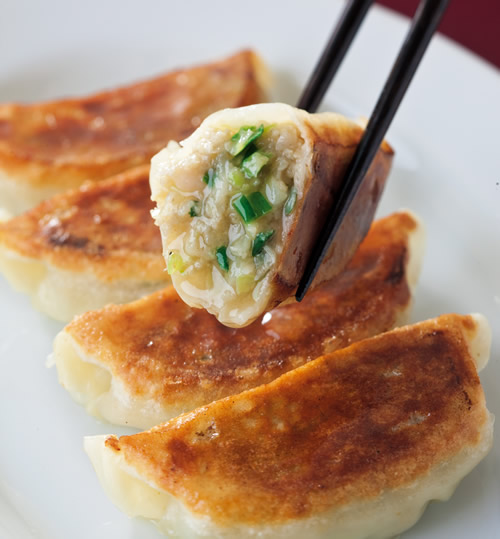
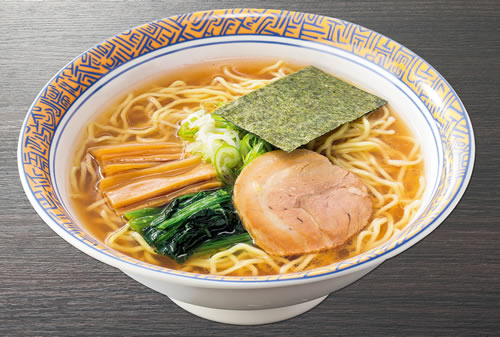



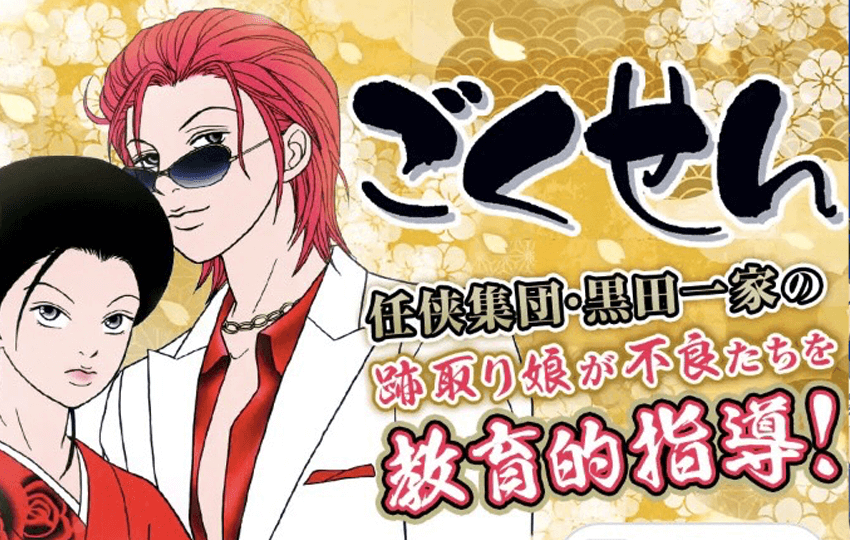
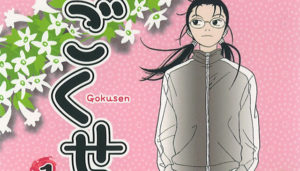 ごくせん
ごくせん




